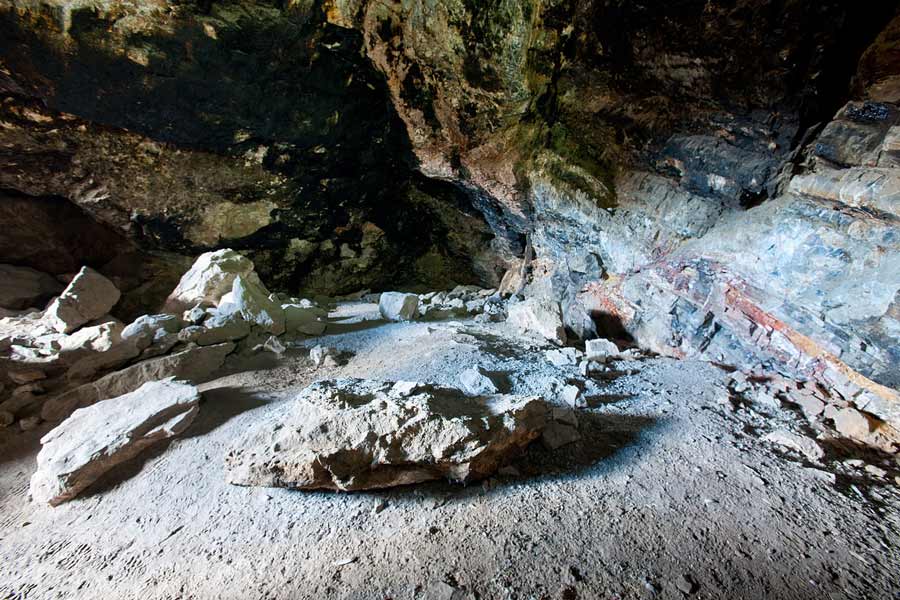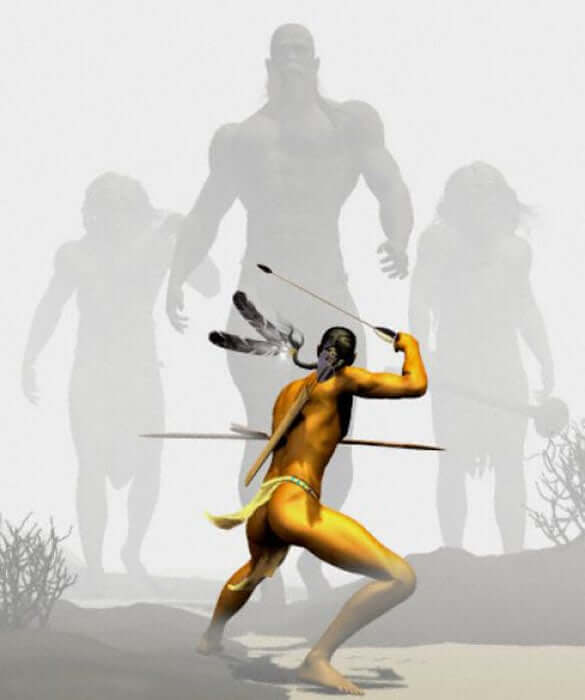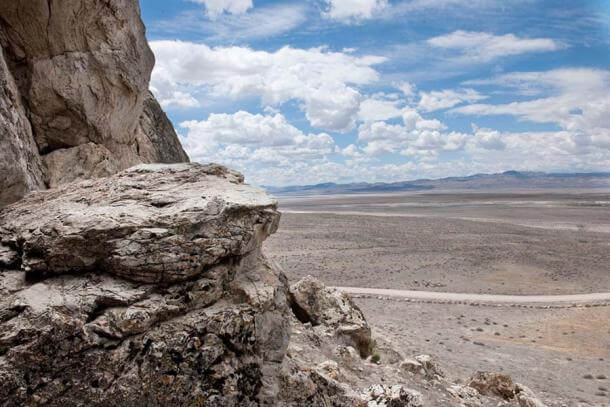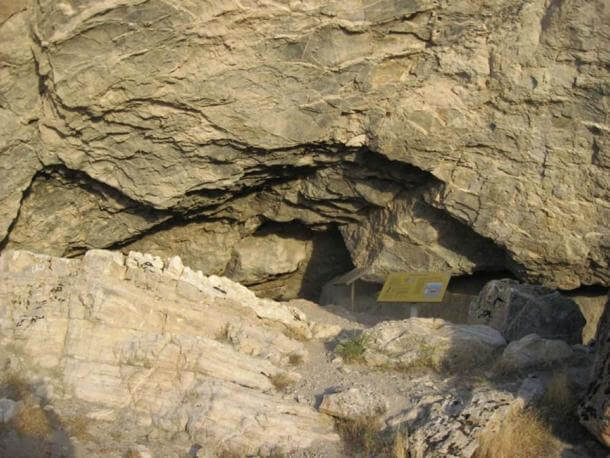
Lovelock Cave: A Tale of Giants or A Giant Tale of Fiction?
The Native American Paiutes tell stories of a race of red-haired white giants known as the Si-Te-Cah, exterminated during a great battle. Evidence excavated at Lovelock Cave in Nevada seems to back up their legendary story.
By: Bryan Hilliard | Ancient Origins
The Paiutes, a Native American tribe indigenous to parts of Nevada, have an oral tradition that they told to early white settlers of the area about a race of red-haired, white giants or “barbarians” that their ancestors referred to as the Si-Te-Cah. The story was written down in 1882 by Sarah Winnemucca Hopkins, daughter of a Paiute Indian chief in her book: “Life Among the Piutes: Their Wrongs and Claims.”
These “giants” were described as being vicious, unfriendly and cannibalistic. In this story, the Paiutes speak of a great battle that took place which led to their extermination at site known today as Lovelock Cave. During the early part of the 20th century, archaeologists found thousands of artefacts inside this cave leading to a lengthy excavation of the site and speculation that the Paiute legend was real.

The Paiute Legend of The Lovelock Giants & Their massacre At Lovelock Cave
Si-Te-Cah or Saiduka literally translates as “tule-eaters” in the Northern Paiute language. The tule is a fibrous water plant, which according to legend, was woven by giants into rafts in order to escape attacks by the Paiute. They used the rafts to navigate across what remained then of Lake Lahontan, an ancient lake that once covered most of northern Nevada during the last ice age.
Researchers Confirm: The Largest Pyramid In Mexico Has Been Found
As the Paiute tale goes, after years of warfare, all the tribes in the area joined together to rid themselves of the Si-Te-Cah. One day, as the tribes chased down the last remaining red-haired giants, they took refuge in a cave. The Paiutes demanded their enemy come out of the cave and fight, but the giants refused.
The coalition of tribes proceeded to shoot arrows at them while starting a large fire at the mouth of the cave. The smoke drove out a few who died in a hail of arrows while the rest were all either burned alive or asphyxiated. Over time, the entrance to the cave would collapse leaving it accessible only to bats and cut off from human contact.

Lovelock Cave In Nevada
Lovelock Cave, known also as Bat Cave, Horseshoe Cave, Sunset Guano Cave and Indian Cave is located 20 miles south of modern day Lovelock, Nevada. It’s a very old cave that pre-dates humans on the continent and in prehistoric times was underneath Lake Lahontan.
In 1886, a mining engineer from Lovelock named John T. Reid was told of the legend by local Indians, who took him to the site to prove it existed. Reid was unsuccessful in getting an archaeological dig started immediately, but two miners, James Hart and David Pugh, realized the value of guano as an ingredient of gunpowder, and created a company to start digging it out in 1911.
They stripped a layer of guano from the cave approximately three to six feet deep, using a pick and shovel with little regard to the artefacts, and shipped some 250 tons of it to the Hawaiian Fertilizer Company in San Francisco.

Archaeological Explorations At Lovelock Cave
Alfred Kroeber, founder of the University of California Anthropology Department was contacted by Hart and Pugh when they reported finding prehistoric artefacts. This spurred the first archaeological dig of Lovelock in 1912 led by L. L. Loud also of the University of California.
A second dig took place in 1924 and after finishing the excavations, Loud collaborated on a report that was published in 1929. What Loud found was nothing short of amazing. Approximately 10,000 archaeological specimens were uncovered including tools, bones, baskets, and weapons.
According to the report, 60 average-height mummies were unearthed. Duck decoys (among the oldest known in the world with feathers still attached) and a sandal over 15 inches (38 cm) long were excavated. A donut-shaped stone with 365 notches carved along the outside and 52 corresponding notches inside was found, which some scientists believe is a calendar.
Interestingly, radiocarbon dating done on follow up visits found vegetable material dating back to 2030 BC, a human femur dating to 1450 BC, human muscle tissue dating 1420 BC, and basketry dating back to 1218 BC.
Archaeologists concluded from this that human occupation of Lovelock cave, by this culture, started in 1500 BC. Today’s anthropologists call the people who lived in the area the Lovelock Culture with the Period lasting some 3,000 years. Many archaeologists believe that the Lovelock Culture was replaced by Northern Paiutes.

Exploring The Lovelock Giants & Their Remains
There is some debate as to the veracity of the claims made regarding the Lovelock Giants. During the initial excavations, there were reports of mummified remains being found of two red-haired giants. One was a female 6.5-feet (1.98 m) tall and the other a male over 8-feet (2.44 m) tall. However, no such evidence remains.
In Sarah Winnemucca Hopkins book: “Life Among the Piutes: Their Wrongs and Claims,” she does not mention giants, but does refer to so-called barbarians. Sceptics claim that chemical staining by earth after burial was a likely reason why mummified remains have red hair instead of black, like most Indians in the area. A study done at the University of Nevada indicates the “giants” were about six feet (1.83 m) tall, and not up to 8 feet (2.44 m) tall as had been claimed.
To others, the uncovering of 15” sandals (38.1 cm) at Lovelock Cave is proof enough that the Paiute tale is real. In an article published in the Nevada Review-Miner in 1931, in February and June of that same year, it was reported that two very large skeletons were found in the Humboldt dry lake bed near Lovelock, Nevada.
One of the Lovelock skeletons was reported to have measured 8.5-feet (2,59 m) tall and was later described as having been wrapped in a gum-covered fabric similar to Egyptian mummies. The other was supposedly nearly 10-feet (3.05 m) long.

Linking The Giants of Lovelock Cave With The Uros Indians of South America
Some other evidence for the Lovelock Giants includes a set of images showing a handprint, more than double the size of a normal man’s hand imprinted on a stone bolder in the cave which was released by Bigfoot investigators MK Davis and Don Monroe in 2013.
Along the Peru/Bolivia border skulls have been found near Lake Titicaca, with claims being made they were from giants with reddish hair and elongated skulls. The legends tell of the Uros Indians making reed boats and living on islands on Lake Titicaca similar to the Paiute. The Incas apparently drove them to live this way much like the Paiutes’ ancestors apparently did to the giants at Lake Lahontan.
Today, many of the original artefacts found at Lovelock (but no giants) can be viewed at a small natural history museum located in Winnemucca, Nevada. Objects such as the duck decoys are housed at the Smithsonian Museum in Washington D.C., and the basketry and bones belong to the Nevada State Museum.
The site is significant in an archaeological context because it is an example of a legend being confirmed by archaeological evidence, in this case legends which the Paiutes elders had been telling their tribal children for years.
In fact, the Phoebe A. Hearst Museum of Anthropology at the University of California published a paper on Lovelock cave in 2005 had this to say: “The site has been extensively pot-hunted and many materials remain in private collections. Lovelock Cave, despite years of destruction, is one of the most important sites in the history of North American archaeology.” Lovelock Cave was officially designated a historical site in 1984.
* * *
NEXT UP!
Graham Hancock: Ancient Civilization Wiped Out By Massive Comet 22,000 Years Ago
Graham Hancock is a popular name on the list of archaeologists and researchers who dared to look at ancient history with a different view. He became the loudest voice in the argument against the accepted chronology of the development of human civilization. He presented evidence of how a massive celestial object completely wiped out a human civilization much older than known settlements.
Mr. Hancock proposed many alternative theories that might not please the mainstream archaeologists. For example, he said that some ancient structures such as the “Great Sphinx” were actually remnants of a much older stage of human civilization that existed before the end of the last Ice Age. He based his theory on the correlation between cultural and geological events between different sites as distant as Indonesia, Turkey, Egypt, and India. These indicate that a human civilization lived much earlier than it is claimed by scientists.
In other words, mankind had developed advanced civilizations long before the emergence of the Mesopotamian and Egyptian civilizations that mainstream archaeology believes were the very beginnings of human civilization.
* * *
READ MORE: El Tajín: The Lost City of The “Thunder” & A Mysterious People
Interesting! The Hidden River of Mercury At Teotihuacan: Path To The Royal Tombs?
Enjoyed it? Please take a moment to show your support for Collective Spark.
We’d love to hear from you! If you have a comment about this article or if you have a tip for a future Collective Spark Story please let us know below in the comment section.
